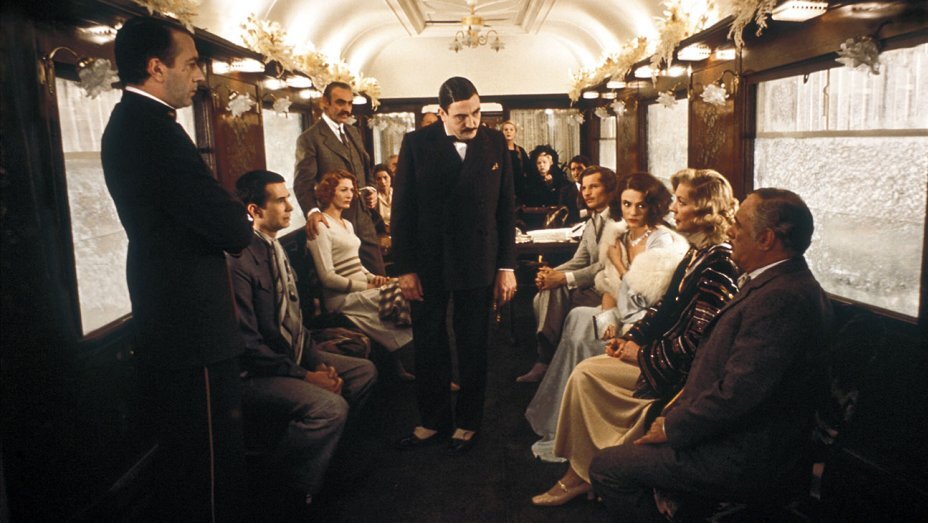On Food Halls, pt 1
Thanksgiving 2019
I can’t avoid the topic anymore. CBS Sunday Morning finally did a piece on food halls. Fortune Magazine said “everyone is sick of them.” Last month Bon Appetit wrote that the inside of a food hall was something “they’d like to never see again.” * There have been plenty of hit pieces that detail food halls’ ample shortcomings, and even more that needlessly gush. I’ve been writing and re-writing this note in my head for awhile now, but what better time than Thanksgiving to write a note about food (halls)?
* Bon Appetit also called Dallas the “Restaurant City of 2019”, which is like calling Shoney’s “elevated.”
Let me start by saying this: I’m Sorry
I’m sorry that food halls have become a plague upon this country. Every 20,000 sf box on a site plan that was Grocery now reads Food Hall. Pat and Merritt and David and I don’t bear all of the blame but we have some share. It’s like Murder On The Orient Express: we weren’t the guilty party but we were a guilty one.
Has anyone on this train NOT put Food Hall on their site plan?
Before I get too much further let me take a step back and ask, what exactly is a food hall? That really should be the topic of this note. To me the definition of an American Food Hall is:
A well-planned collection of small unaffiliated food vendors and related retailers in a communal setting with a unifying theme.
Eataly? Some Eatalys are fantastic, some are frankly forgettable. None are food halls. I dig the Hub on 30A but it isn’t a food hall (neither is our similar project in Dunwoody, GA). Trinity Groves? Not a food hall. Maketto? My love of Maketto is well known. But it isn’t a food hall.
Call them what you want— farmers markets, municipal markets, souks, bazaars, food courts—they’re nothing new. We stole the idea for Krog from Melrose Market and Oxbow Public Market. Steve Carlin got the idea for his iconic Oxbow and Ferry markets (1) from the century-old artisanal grocery he owned, and so on. Everything old is new again. And apparently, old again.
One time I met with the Director of F+B for a large retail REIT – this was a guy who was F+B Director because I think he had signed eight Panda Express leases the year before—and I mentioned something to him about the Ferry Building and I swear to God I saw him write F A I R Y B U I L D I N G (2) in his notebook, like this was something he needed to research when he got to the office. (3)
I’ve always wanted to develop a Fairy Building. I’m not exactly sure what it would be yet, but I bet it would be really experiential.
I hope that guy doesn’t get these emails.
Over the last few years we’ve built so many food halls and “food halls” and joints-masquerading-as-food-halls that they are seemingly on every corner. And that’s a big part of the problem. Ubiquity is the archenemy of authenticity. Authenticity is poke on the beach in Hanalei. Ubiquity is poke at the mall in Omaha.
Beyond their ubiquity the bigger part of our National Food Hall Epidemic is that most of the newer places are just . . . crummy. Poorly planned, poorly designed, poorly curated food courts made from identikit parts and tenants. Holiday Inns of F+B. We’ve already built too many, and dozens of them will fail. At Revel we’ve gotten calls to help fix three already-broken ones.
May your food hall always be surprising — old Irish blessing
But let’s say you still want to build a food hall. You’ve done your research and your community needs a great, hospitable gathering spot. Honestly there are lots of opportunities to build creative food spaces all over the country, a couple of surprising major metropolitan areas in particular.
What now?
The first thing you need to know is that is takes a lot of time and effort and attention to detail. There are no shortcuts, not anymore. The consumer has gotten wise. The press is ready to pounce.
The second thing you need to know is: do not master-lease your food hall space to someone. This is not an easy shortcut to success. I understand the appeal; Voila! you’ve leased 30,000 sf, and all before lunch. But they un-lease even faster. The pie isn’t big enough for a landlord and a master tenant and the subtenants all to make money. Someone goes broke. If you want to give your space away for next to nothing while losing control of the final product, be my guest.
While I’m at it, here are a few more helpful hints of what to avoid. If you want to make a real American Food Hall, a great place that your patrons love, a place that is a community jewel, I implore you, do not do the following:
Include poke. The problem isn’t raw tuna per se: it’s the fact that poke is inevitably a franchise run by some guy who just sold his tech company. Would you lease office space to a former poke restauranteur with a tech startup? No franchises.
Put the restaurants along the outside walls and all of the seating in the middle.
Cram it in the basement that you haven’t been able to lease since it was built.
Install a brewery with a hot dog cart and an empanada stand and call it a food hall. A brewery is often a fantastic tenant and a lot of fun, but it isn’t a food hall.
Build the stalls so that the sheetrock goes all the way to the ceiling and the food comes out of this mysterious rectangle in the middle. Unless the theme is Supermax. Then you should absolutely do that.
Forget about lighting. We screwed that up at Krog. Don’t make that same mistake. It is not a surgery center or a high school gym: it doesn’t need a billion foot-candles. It needs a little romance. A little mystery. Revival in Chicago nailed the lighting
Design it in High Brooklyn Industrial style. As a country we simply must move on.
Plan one-sided aisles. This may be the single biggest mistake in all of retail design. If one storefront doesn’t face another storefront, don’t do it.
Lease it to a single tenant who makes all of the food. We used to call these cafeterias.
Build a food hall by itself. We developed Krog to a sporty cap rate in 2014 but we couldn’t do that with today’s land prices and construction costs. A great F+B destination can make a dollar or two on its own but what it does better than anything is spin up the values of the office and the apartments and the retail around it.
Yes, I really have thought about how we could build a cool cafeteria. True Story.
Over the next few notes I’ll talk about some of the things you should do if you want to develop a food hall, about some ways I think F+B will / has to evolve over the coming years, and maybe get into the details what makes some of the great ones really great.
And please remember this: there is always an F+B solution to the problem of bringing activity to a place. But if you’re going to go all in and create a real food hall, do it right.
Where We’re Headed: Back to D.C. next week, New York for ICSC (let us know if you’ll be there too), home for the holidays, then Dallas, Charlotte and Orlando in the new year.
Food Hall Guide—
Our favorite American Food Halls that don’t rhyme with Frog (alphabetically):
1-800-Lucky
MIAMI
Proving you can pack a lot of fun into a little space, with plenty of outdoor dining to take advantage of the weather. The all-Asian lineup is on point and so is the branding. A great addition to Wynwood.
Grand Central Market
Los Angeles
You’ll notice that most of our favorites are old school municipal markets. Grand Central is fantastic though not without controversy: its prior owner turned out many older grocer tenants for new F+B. But this and the Farmers Market should be on your LA list.
Melrose Market
Seattle
Faced with 6,000 sf in a cool old building he couldn’t fill in 2009, the developer cut the space into six tenant stalls. It was an immediate hit. Sitka & Spruce is a delight. Regency Centers just bought it this year.
Oxbow Public Market
Napa CA
It may not be the very first of this new generation, but it certainly is one of the best. A fantastic collection of street food, retail and artisanal products. More market than food hall, and I mean that as a compliment. Madison Marquette bought this in 2015.
Reading Terminal Market
Philadelphia
A friend once said that he was afraid his kids were going to get swept away in the vast crush of people there. Built 120 years ago underneath a train station, it is dark and massive and funky and wonderful.
West Side Market
Cleveland
Built at the same time as Reading, this fantastic structure doesn’t get as much attention and that’s a shame. It is still a municipal market selling a variety of dry goods and groceries. But you can also find a terrific pierogi and a Polka City Pilsner. A timeless classic.
Let us hear what you’re working on and if we can help in any way. If there are new food halls in your part of the world that we need to check out, let us know! Scroll to the bottom of this page to join the mailing list. We hope you had a food-filled Thanksgiving!
Cheers,
G








